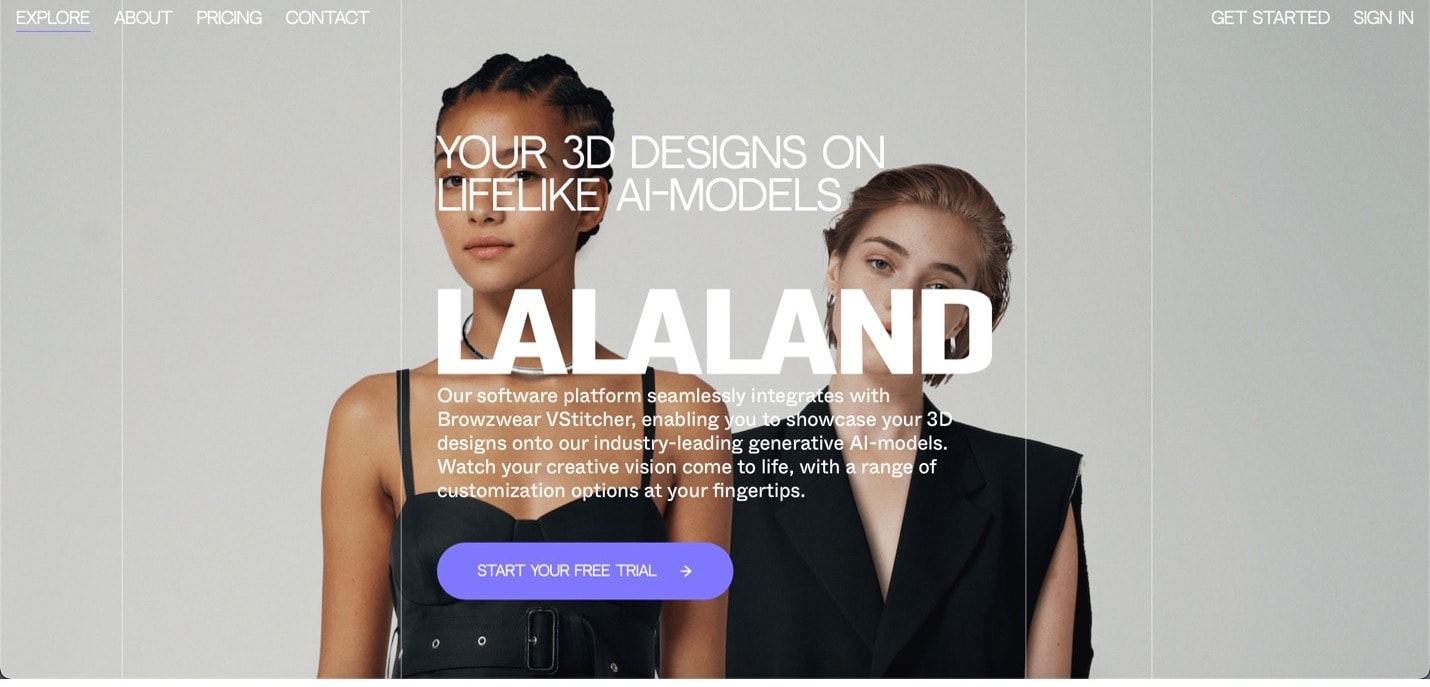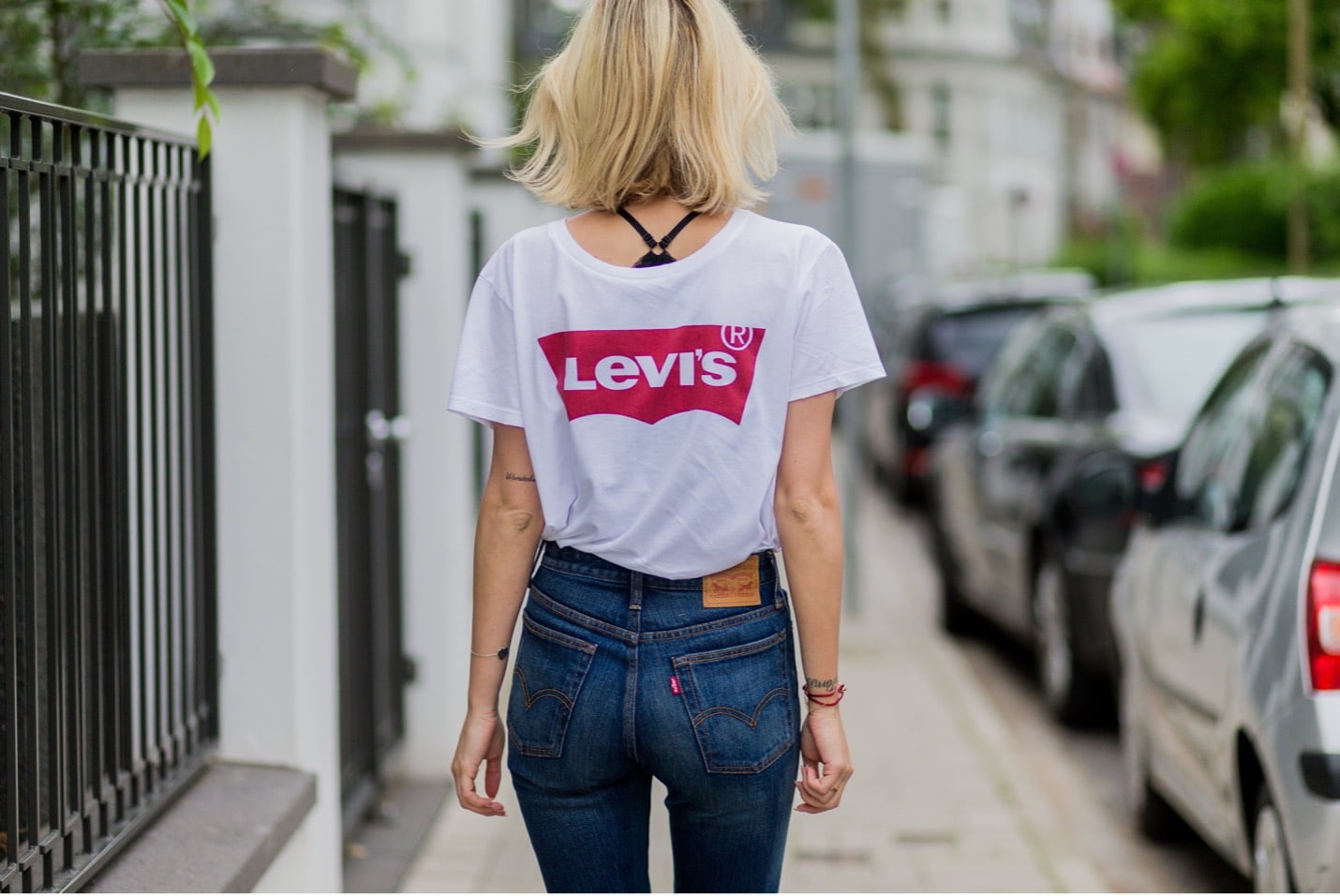Levi's is a renowned denim company. It has recently taken a bold step by incorporating AI fashion models into its business operations. This strategic move aims to enhance the online shopping experience. It's aimed to promote diversity. It's also meant to give customers a more personalized fashion approach.
Levi's decision to embrace AI fashion models carries significant implications for the future of clothing because they are a staple in the industry. This article will explore the impact of Levi's move. The ways that AI is changing the fashion industry will also be explored. You'll also see AI's potential in the coming years for fashion.
In this article
Part 1. A Quick Introduction to Levi's
Levi's, the iconic denim company, has always been at the forefront of fashion. It combines timeless style with innovation. Levi's has cemented its position as a global brand leader throughout its history. Its contribution to denim and fashion is well-cemented.
Levi's Within The Fashion World
Levi's has come a long way since its humble beginnings in San Francisco in 1853. Initially renowned for its durable workwear, the brand gained widespread recognition with the invention of the blue jeans in 1873. Levi's jeans quickly became an iconic symbol of American culture. It quickly became synonymous with quality craftsmanship and rugged style.
Throughout its history, Levi's has consistently embraced innovation to meet the ever-changing demands of the fashion industry. Today, as the digital era shapes consumer behavior, Levi's is adapting to the times by exploring the possibilities offered by AI fashion models. This aligns with the company's vision of maintaining its position as a global brand leader. They do this by staying at the forefront of technological advancements.
How Levi's Wants To Move Forward
The online shopping age introduced consumers seeking a personalized and immersive experience. Levi's recognizes the need to cater to diverse body shapes, colors, and sizes. Traditionally, products showcased by Levi's featured a single clothing model. The mode limited the representation of different customers.
Levi's aims to provide a sustainable solution to a longstanding industry challenge with artificial intelligence. There have yet to be any details on how this will be implemented. However, the company sees AI-generated models as a complement to real models rather than a complete replacement.
The company recognizes that human models will always play a vital role. They want to emphasize the connection that real individuals bring to fashion.
Part 2. Explaining How Levi's AI-Generated Models Will Work
Levi's recently announced its partnership with Lalaland.ai. They introduced the idea of integrating AI-generated fashion models into the shopping experience. This generated excitement and criticism within the industry. In implementing this innovative technology, Levi's aims to achieve several vital goals while addressing the concerns raised by skeptics.
The primary goal of using AI-generated models is to enhance the online shopping experience and promote diversity and inclusivity. When customers visit Levi's app or website, they typically see products showcased on a single clothing model. This limited representation often fails to cater to Levi's customer base's diverse body types, ages, sizes, and skin tones.
By introducing AI-generated models, Levi's seeks to bridge this gap and allow customers to visualize how different garments would look on models that resemble their characteristics. They see it as a way to bridge the gap caused by the expense of model shoots.

Criticism of Levi's AI Models
However, Levi's faced criticism for portraying AI models as a solution to advancing diversity and inclusion. They clarified that was not the sole purpose of the pilot program. The company acknowledges that real action is necessary to achieve diverse inclusion goals. AI-generated models should only be seen as nothing other than a substitute. They view AI models as supplements to real models, enriching the overall shopping experience for customers.
Levi's move is undoubtedly innovative. However, it is essential to acknowledge the challenges of implementing AI fashion models. There are sensitivities surrounding AI-related technology. This is why Levi's should be aware of the concerns it may raise. The company remains committed to transparency and ensuring the pilot program strengthens the consumer experience. Testing will start later this year.
How Levi's AI Models Could Potentially Affect the Future
Implementing AI-generated models could have a significant impact on the fashion industry. Traditionally, photoshoots are limited to one or two models per product due to logistical constraints. However, with the help of AI, Levi's aims to overcome this limitation.
It is important to note that Levi's does not intend to scale back on live photoshoots or the use of human models. Authentic storytelling has always been integral to the brand's connection with its fans. They still believe that human models bring a unique emotional connection to fashion. The partnership with Lalaland.ai aims to enhance existing practices by giving customers a better sense of what a given product looks like.

The AI-generated models will complement accurate models, creating a harmonious blend of technology and human creativity. This will force other fashion brands to follow suit. This way, people can access inclusive shopping to whichever brand they shop with.
All About Lalaland.ai
Lalaland.ai was founded in Amsterdam in 2019. It has become a leading force in leveraging AI to revolutionize the fashion industry. Their technology allows fashion brands and retailers to create customized AI-generated models. This helps them cater to their diverse consumer base. By partnering with Lalaland.ai, Levi's is committed to merging fashion and technology to provide a more varied and inclusive customer experience.
Lalaland.ai uses advanced artificial intelligence, which creates hyper-realistic models of various body types, ages, sizes, and skin tones. This technology has the potential to enable Levi's to publish more images of their products on a range of body types more quickly. This will expand representation and personalization in their marketing efforts.

Pricing
The future that Lalaland.ai's technology is providing is fantastic. If you want to join the AI fashion model trend, you can try Lalaland.ai. It offers the following pricing plans:
- Freemium – (5 renders per month and 1 model per size)
- Business – US $600 (Unlimited models, complexions, and 50 renders per month)
- Enterprise – US $900 (Unlimited renders per month)
- Custom – Custom pricing based on business need
Part 3. Ways That AI Is Changing the Fashion Industry
AI is changing the fashion industry in several ways. It creates new ways to interact with AI models. It gives us fashion ideas. It understands styles and improves the shopping experience. Collaborations like Levi's AI fashion models show how the industry uses technology to promote diversity, inclusivity, and personalization.
As AI gets better, it has the potential to continue transforming fashion. It can help brands, designers, and shoppers alike. Many new possibilities can change how people think about and engage with fashion. This section will explore how AI is changing the fashion industry.

Generating Fashion Models
Fashion model generation is one of the freshest AI revolutions. It is similar to what Levi's and Lalaland.ai are trying to achieve. AI provides shoppers and businesses to visualize how clothes fit certain people. This is especially helpful when shopping online.
Most fashion brands used only one fashion model per product shoot until the introduction of these AI models. This way, fashion has become more accessible and a lot easier. The AI models will ultimately drive up sales and improve the sellability of products.
Providing Fashion Ideas
Several tools are already providing fashion recommendation services. Usually, people would look at social media to find style inspirations. With the help of AI, determining fashion styles that fit a person's physique has never become more accessible. The inspiration can range from providing clothing types to color combinations based on a person's skin tone.
Understanding Fashion Styles
AI algorithms can look at fashion styles to help brands and designers understand what people like and what's popular. AI can find new styles and predict future trends by looking at fashion pictures' patterns, colors, and textures. This helps fashion brands make intelligent choices about their collections, staying relevant and meeting the industry's changing demands.
Shopping Assistance
AI has also changed how people shop for clothes. It can now provide personalized help and suggestions. Virtual shopping assistants powered by AI can understand what customers like. From that, it can suggest products that match their tastes. Shopping becomes easier since customers can find clothes they'll like. Most of the time, AI is smart enough to suggest pieces that fit their style.
Conclusion
Levi's has entered the world of AI-generated fashion models. That's a significant change in the fashion industry. With the help of AI fashion models, Levi's can now offer a broader range of models that represent its products. That means they can cater to customers of different body types, sizes, ages, and skin tones.
This move shows how AI is becoming embedded in the fashion industry. It can create virtual models, provide fashion ideas, and improve the shopping experience. As AI continues to develop, it will have a more significant role in shaping the future of fashion. This will ensure that the industry stays dynamic and inclusive. It also shows how it can respond to the changing needs of its diverse customers.

